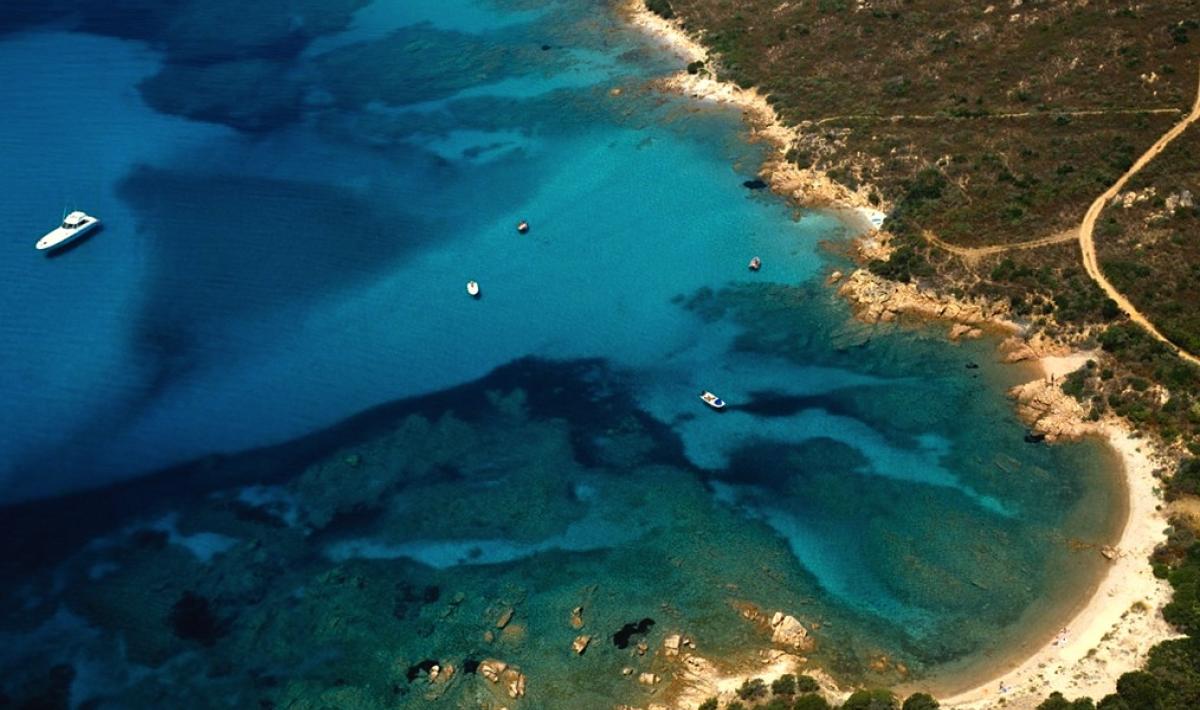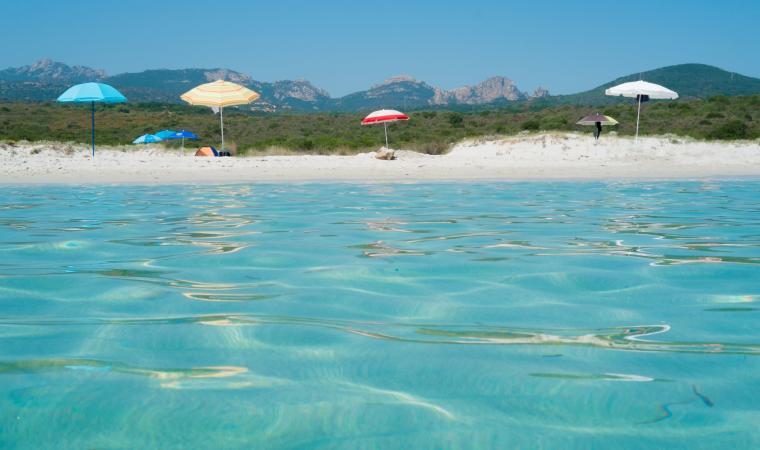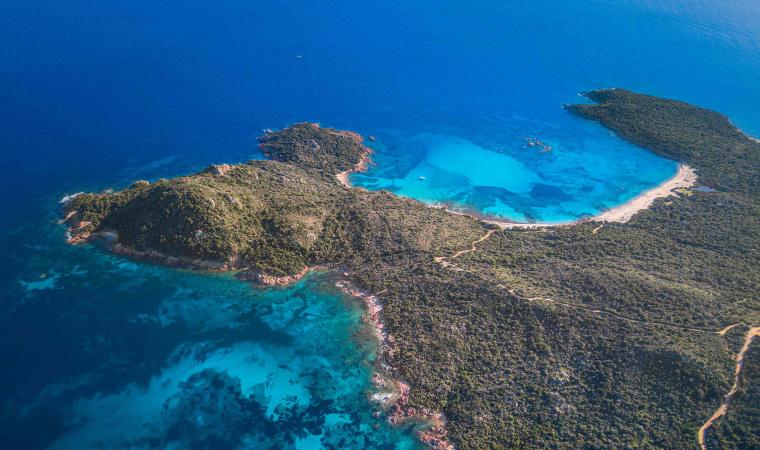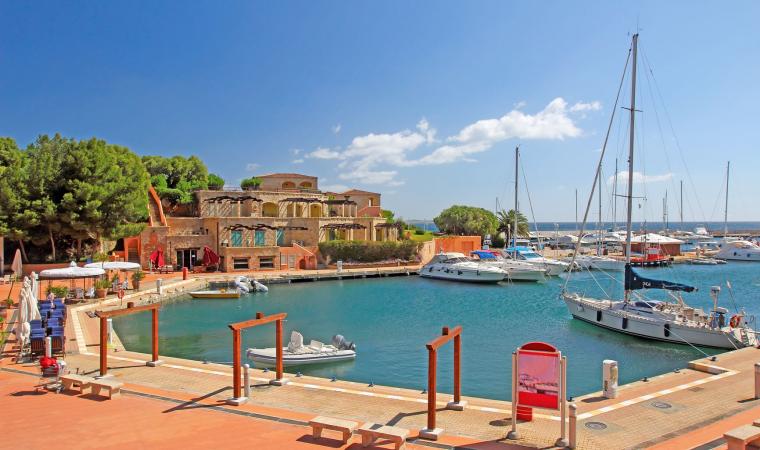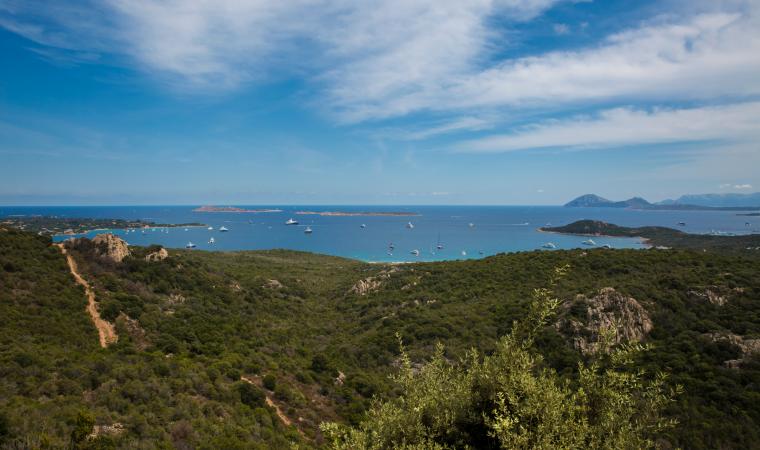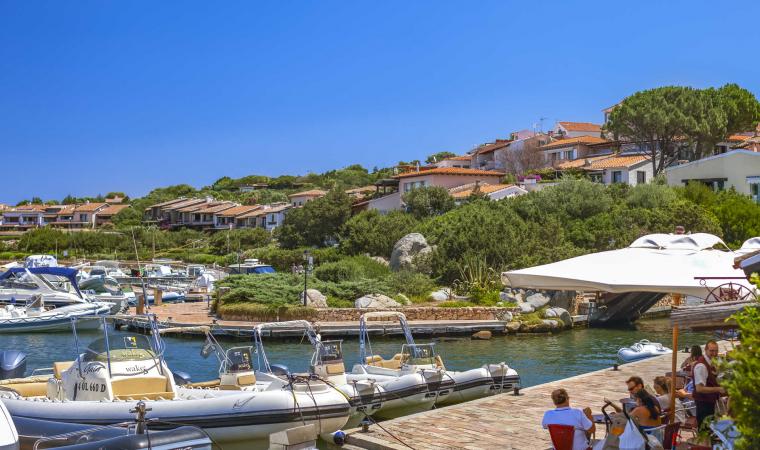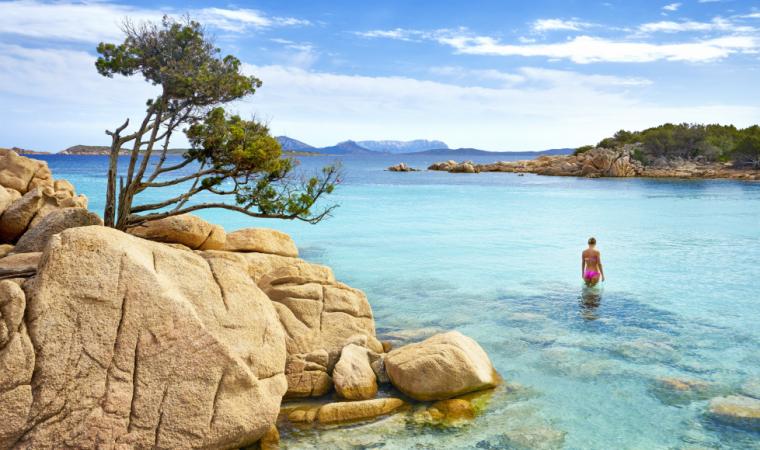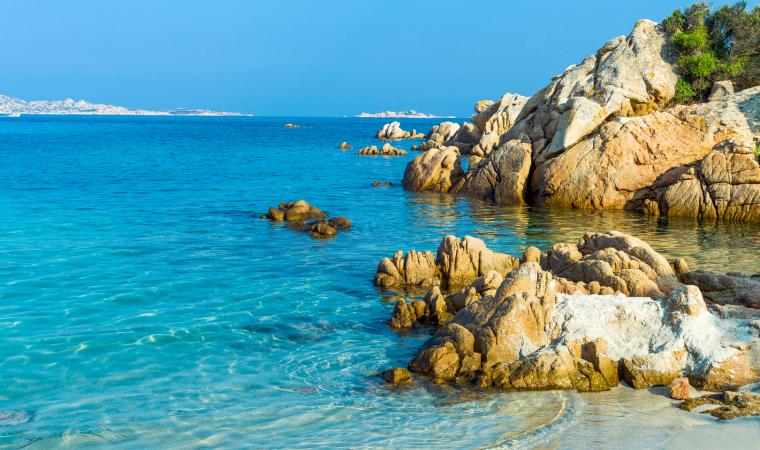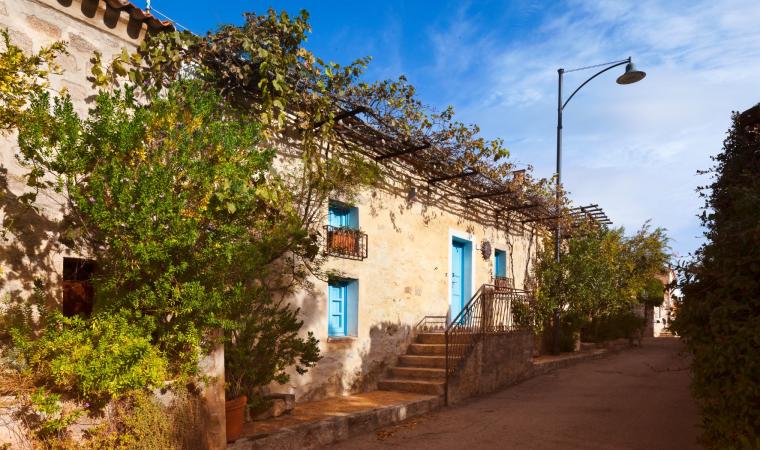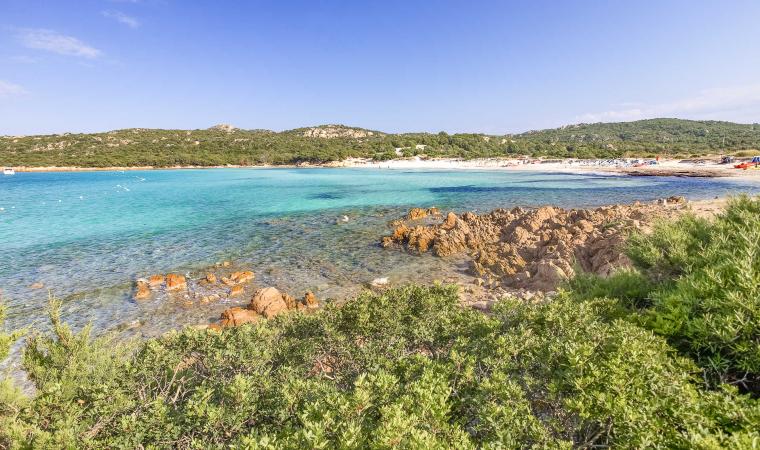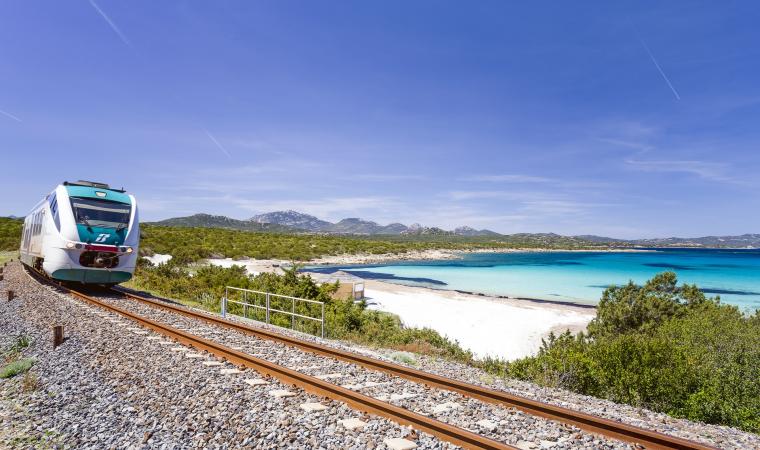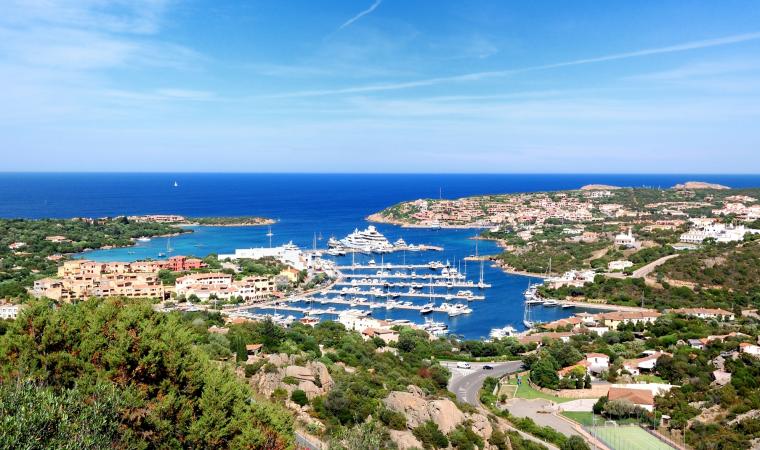Its name is linked to the giunchi (meaning rushes) that populate the nearby marshy areas and it is no coincidence that unspoilt nature is the recurring theme along this stretch of coast between Portisco and the inlet of Petra Ruja, in the territory of Olbia. In reality, Cala Razza di Giunco has four beaches, including promontories, islets and fjords, creating a spectacular setting, nestled between the pink granite rocks. The beaches alternate white sand and golden sand, sometimes with pebbles, while the crystal clear sea will strike you with its deep blue and emerald green reflections. The shallow waters make it suitable for children, but it is also a destination for snorkelling enthusiasts and it is populated by numerous species of fish near the shore.
The cove is equipped with numerous services: ample parking, rental of sun loungers and beach umbrellas, windsurfing school and equipment rental and a kiosk bar. In addition, the Razza di Giunco coast is dog-friendly: you can relax and have fun in the vegetation, in the sand or in the water with your four-legged friend.
When looking out to sea, you will see the islands of Soffi and Mortorio in the distance. Then, to the east, the outline of the islet of Portisco stands out and, further on, Porto Rotondo and Punta Volpe. To the west, a spectacular promontory embraces the last and smallest of the cove’s four beaches, known as Razza di Juncu.
Further north-west, you can continue your tour of the Costa Smeralda beaches along provincial road SP 94, in the Arzachena area. You will come across Petra Ruja, which stretches in an arch shape and is characterised by its red rocks that give it its name. Then there is Liscia Ruja, the largest and best-equipped beach of the Costa Smeralda, with 500 metres of sandy shore surrounded by rockroses and strawberry trees, with its sand that turns pink as you get closer to the shoreline. Moving on, there is the bay of Cala di Volpe and, one kilometre to the south-west, the seaside village of Capriccioli, with its coastline set between pink granite rocks, surrounded by junipers and wild olive trees and divided into two main coves, with soft, light sand and shallow waters, as well as a sea reflecting captivating shades of colour ranging from turquoise to emerald green.

